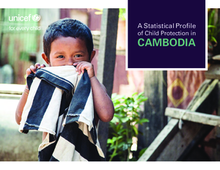Introduction
Every child has the right to grow up in a safe and nurturing environment, free from violence and exploitation. Children in Cambodia are increasingly protected by improved national legislation and services thanks to generous development assistance in this sector. The InterCountry Adoption Law, the Law on Suppression of Human Trafficking and Sexual Exploitation and its Explanatory Note, the Law on the Protection and Promotion of the Rights of Persons with Disabilities, the Law on Domestic Violence, and the recently approved Juvenile Justice Law are among the major achievements.
Systemic changes in alternative care are particularly noteworthy. The government has introduced legislative, data and programmatic reforms to control the rapid and unregulated increase in the number of institutionalized children in Cambodia. For example, the Subdecree on the Management of Residential Care Centres was adopted in 2015 to regulate the ‘residential care’ sector, and a full mapping of all residential care facilities in the country was undertaken. Based on both of these activities, an action plan aimed at improving child care was signed in 2016 and launched in 2017. The plan aims to safely reduce the number of children living outside family care by 30 per cent between 2016 and 2018.
The need for relevant and accurate data on child protection is urgent for monitoring data trends, for planning and advocacy purposes, and for tracking progress towards the Sustainable Development Goals (SDGs) and its targets. Although Cambodia has a wealth of child protection data, until now this information has been widely dispersed. What’s more, the country lacks a systematic process for disseminating timely, credible and reliable information on key areas of child protection in a consolidated and accessible format.
This report, the first of its kind in Cambodia, brings together the dispersed data into a comprehensive profile of child protection in the country. The publication is structured around 14 core themes and key indicators; divided into sections that summarize current status and trends. Each section includes a brief narrative and a more detailed selection of relevant data and charts. Concluding sections provide baseline child protection data for Cambodia relevant to the SDGs (where available), and identify data gaps and shortcomings, along with specific ways to address them. The report aims to help policymakers, programme implementers and evaluators analyse progress and formulate evidence-based policies and programmes. It could also provide the impetus to strengthen child protection data management systems in Cambodia.
Also available in Khmer.

